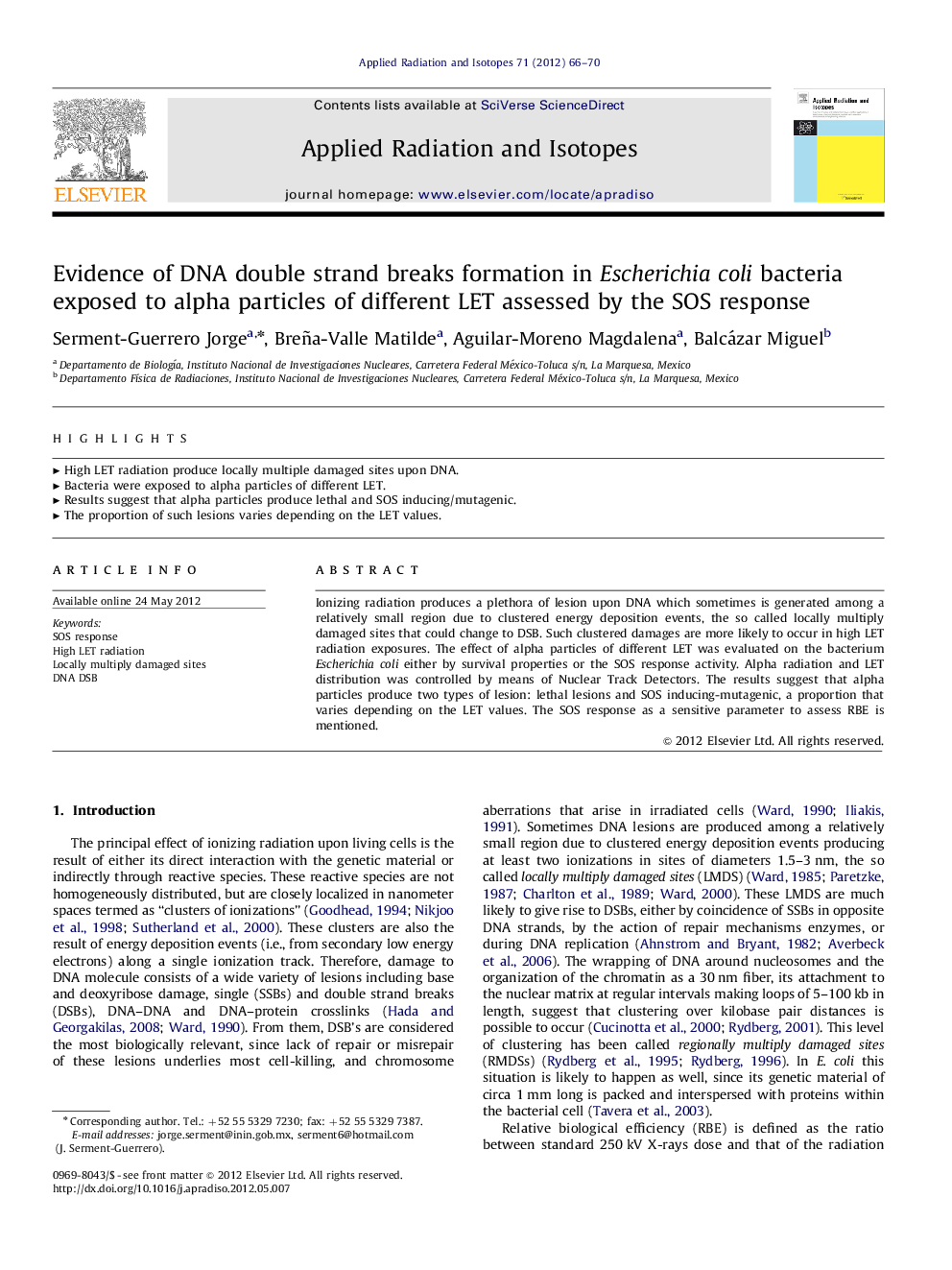| Article ID | Journal | Published Year | Pages | File Type |
|---|---|---|---|---|
| 1876066 | Applied Radiation and Isotopes | 2012 | 5 Pages |
Ionizing radiation produces a plethora of lesion upon DNA which sometimes is generated among a relatively small region due to clustered energy deposition events, the so called locally multiply damaged sites that could change to DSB. Such clustered damages are more likely to occur in high LET radiation exposures. The effect of alpha particles of different LET was evaluated on the bacterium Escherichia coli either by survival properties or the SOS response activity. Alpha radiation and LET distribution was controlled by means of Nuclear Track Detectors. The results suggest that alpha particles produce two types of lesion: lethal lesions and SOS inducing-mutagenic, a proportion that varies depending on the LET values. The SOS response as a sensitive parameter to assess RBE is mentioned.
► High LET radiation produce locally multiple damaged sites upon DNA. ► Bacteria were exposed to alpha particles of different LET. ► Results suggest that alpha particles produce lethal and SOS inducing/mutagenic. ► The proportion of such lesions varies depending on the LET values.
